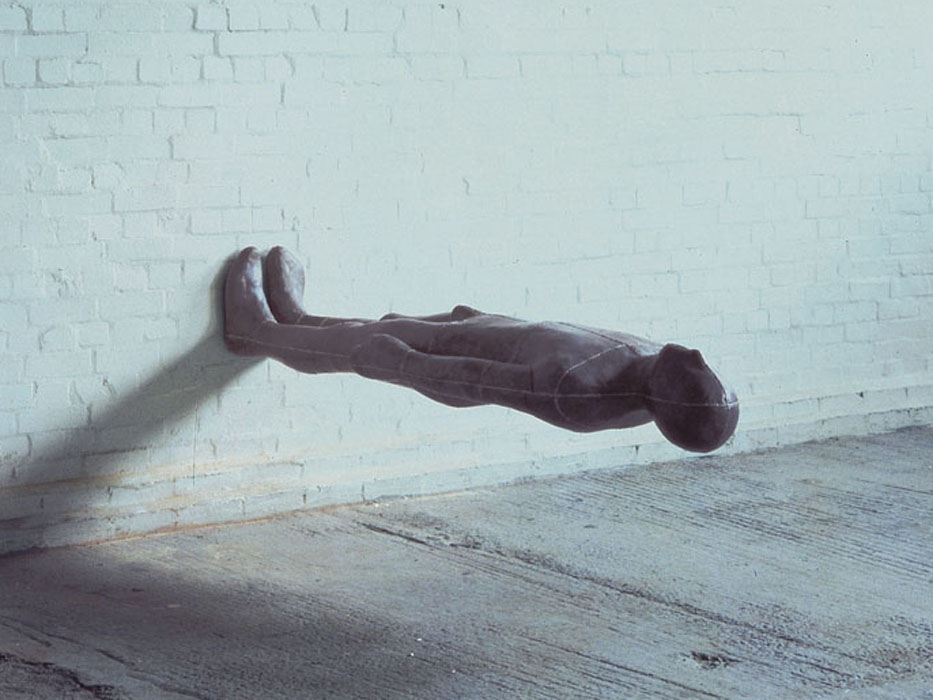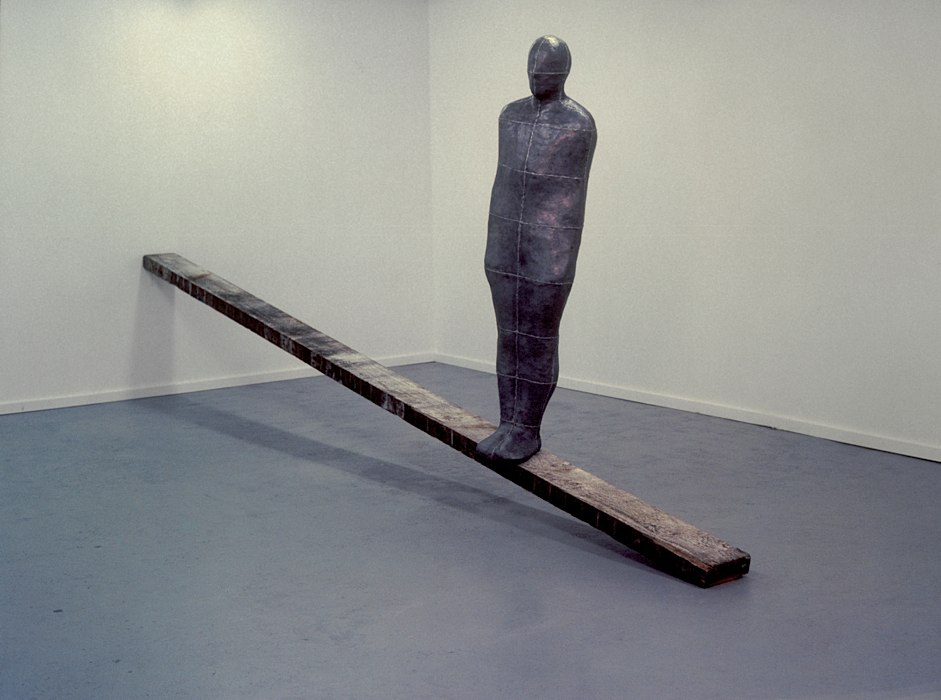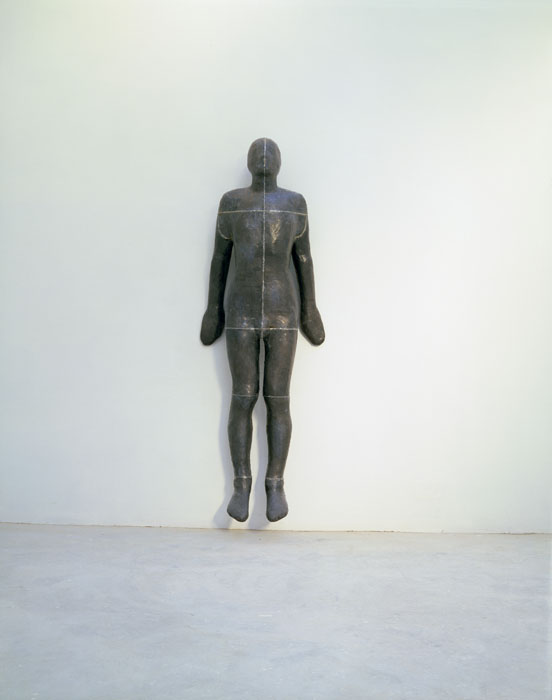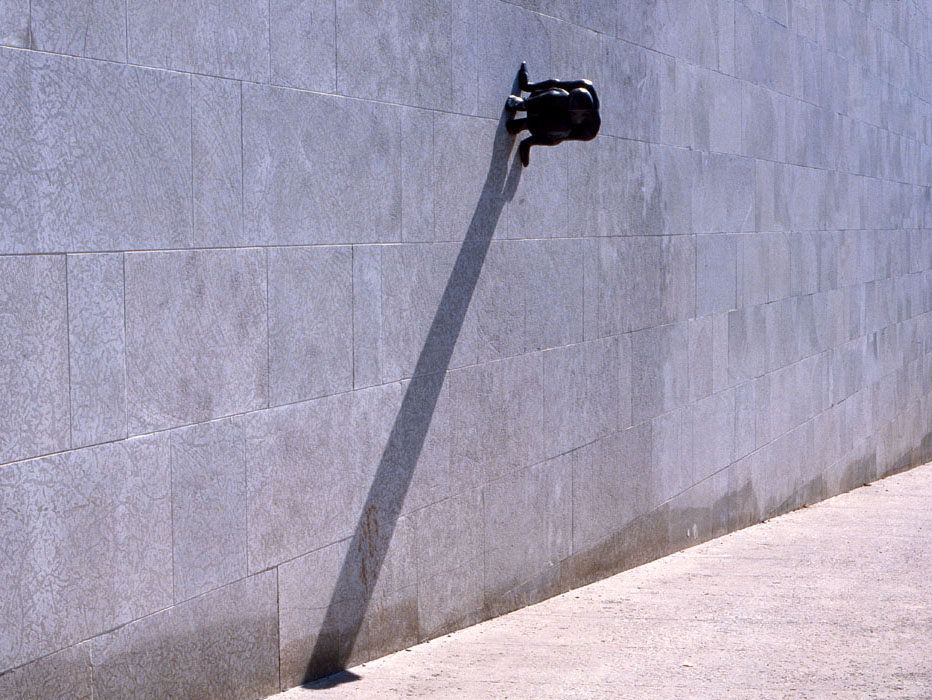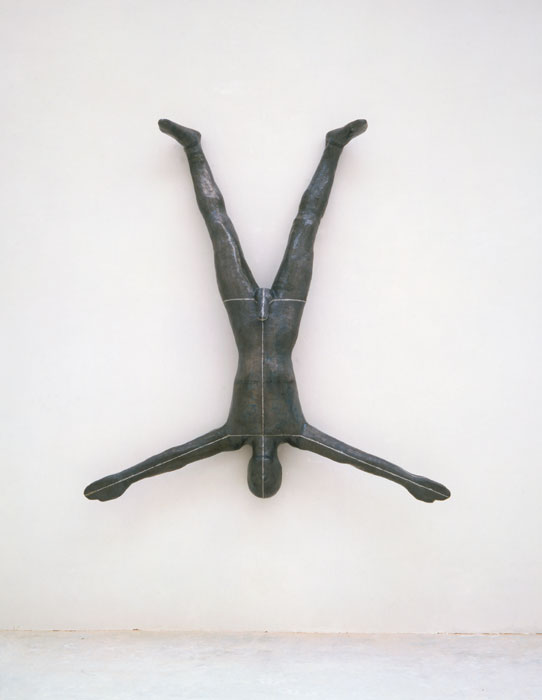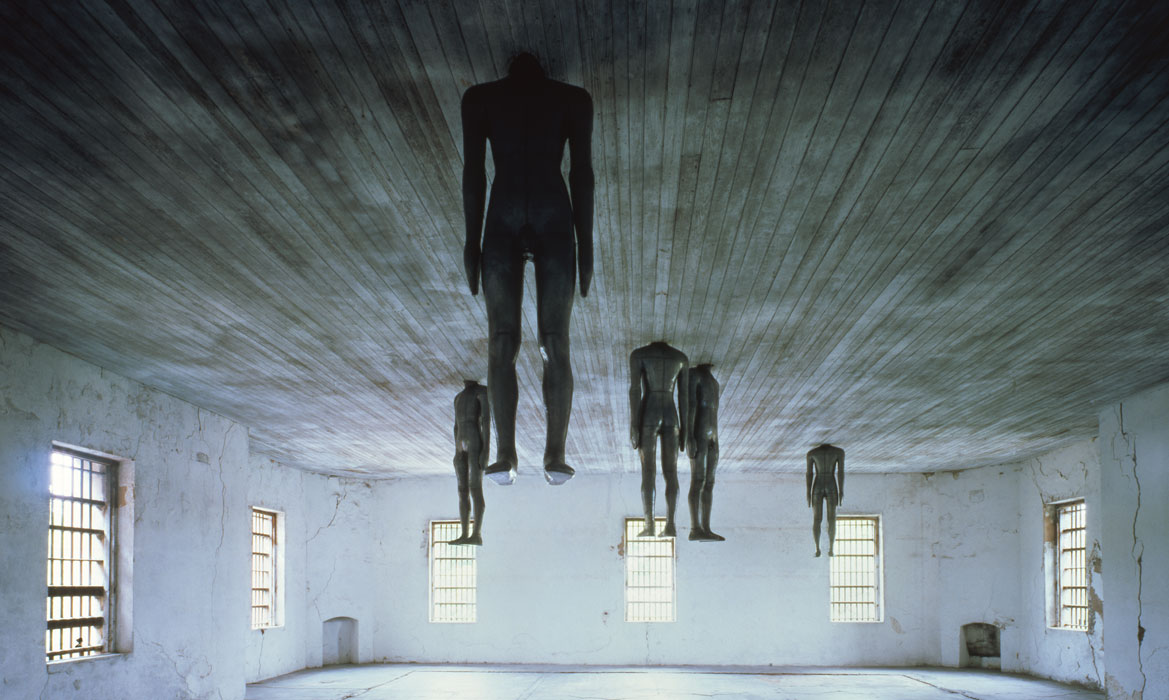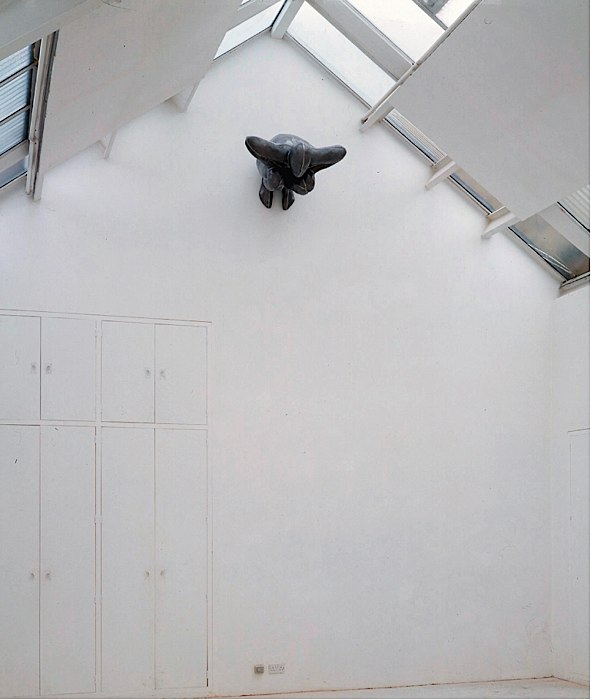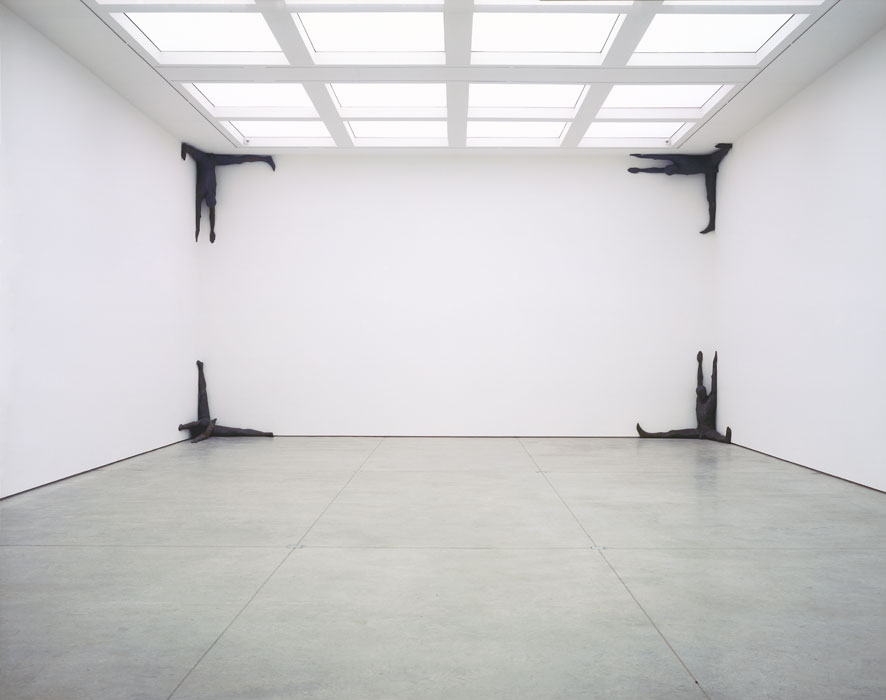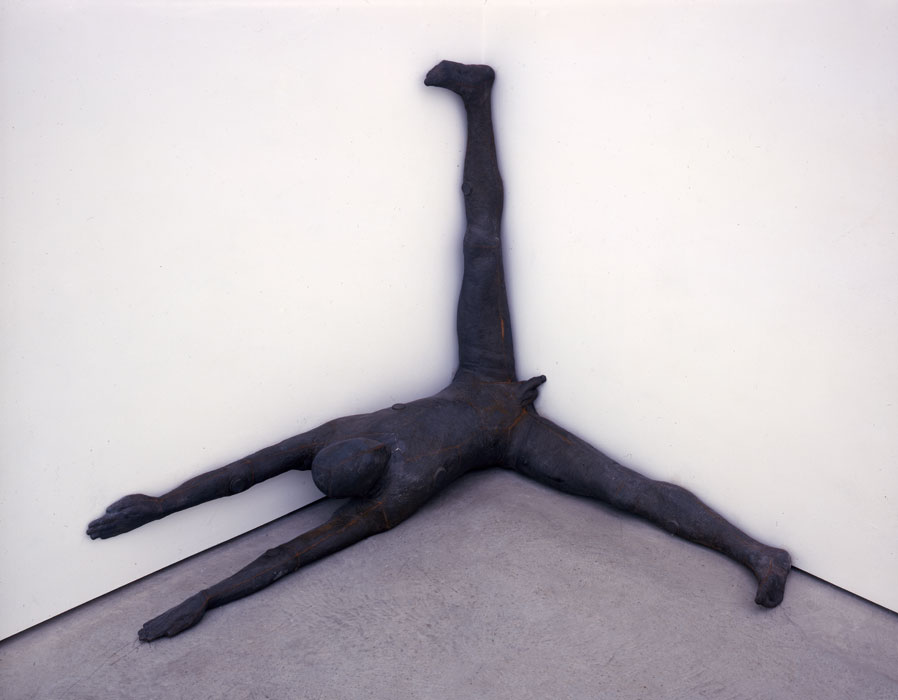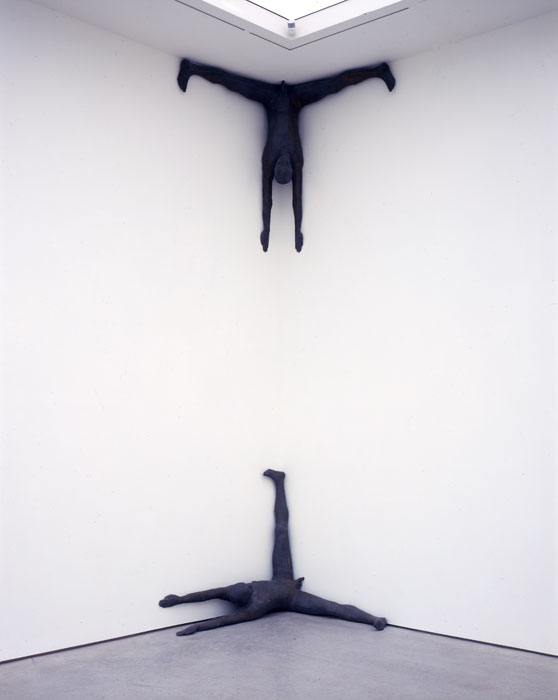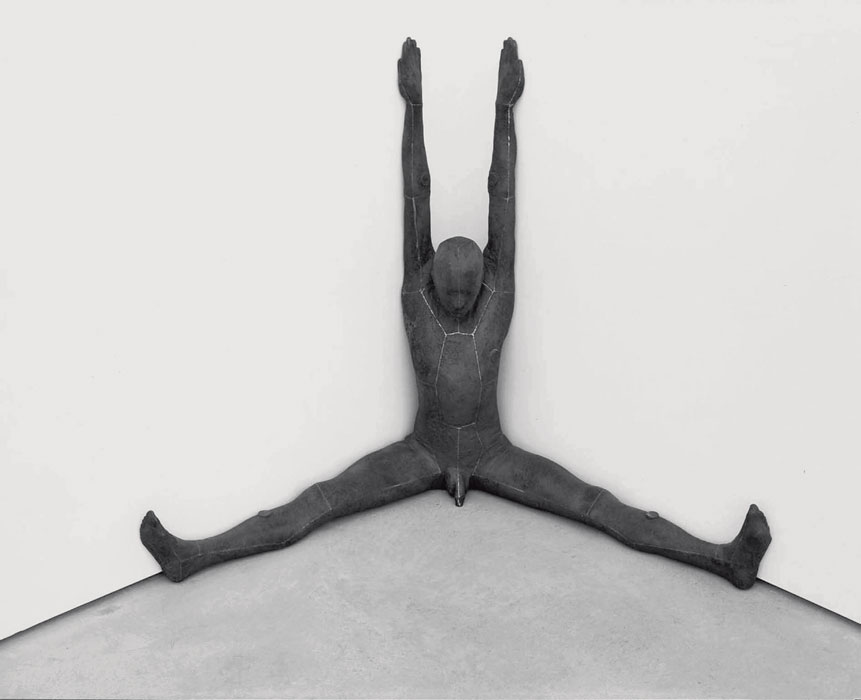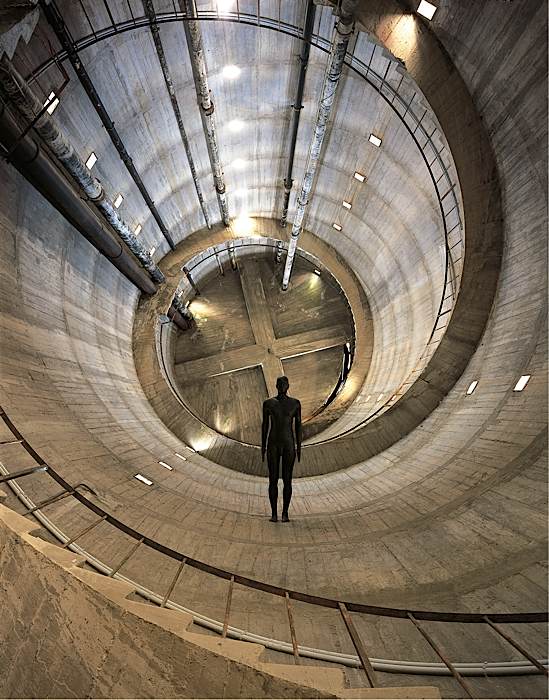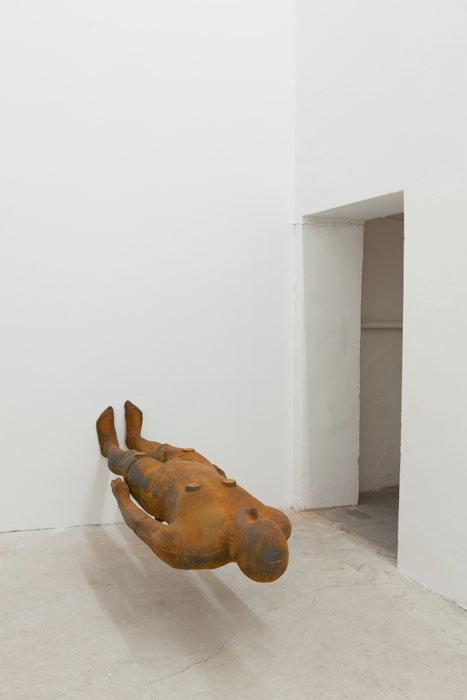From 1984, I began to be interested in how you could use works as a lever to undermine the certainty of the spectator in his or her position in space.
The first SUSPENDED AND GRAVITY WORK is EDGE. Hung on the wall at bed height, it attempts to destabilise the normal projected subjective coordinates of front/ back, left/ right, up/ down. By being placed at the height of a normal sleeping person in a bed, it connects the reality of everyday with the state of the dream. EDGE was made in several versions, in iron, to hover both from the floor and from the ceiling, having different effects on the viewer.
KEEP acts as a similar lever, but with the arms outstretched, as in STANDING GROUND. SICK takes the position of a man at prayer, but with the knees at the level that they would be if the man were standing, to cause a certain disequilibrium or nausea in the viewer.
This concern with the somatic effects of the work on the viewer's perception continued with PORE and LEARNING TO THINK, both are works that introduce the body in impossible ways into architecture: LEARNING TO THINK treats the body of the room as if it were a filled swimming pool.
All of these experiments culminated in DRAWN, in which eight identical bodyforms, pressed into the corner of a room, were placed in different orientations, destabilising the room as if it was spinning freely through space.

